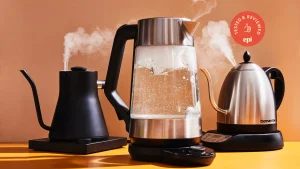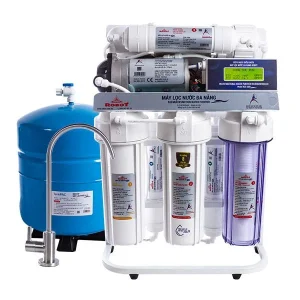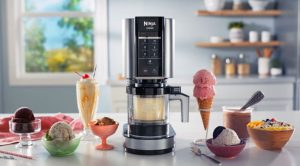Rice Cooker: What Is It? How It Works, Applications, and Safe Usage Tips

A rice cooker is a household appliance designed specifically to cook rice efficiently and conveniently. It simplifies the rice cooking process, ensuring perfectly cooked rice every time, with minimal effort. In this article, we will discuss what a rice cooker is, how it works, its common applications, and provide tips for safe usage.
1. What Is a Rice Cooker?
A rice cooker is an electric kitchen appliance designed to automatically cook rice by controlling the temperature and cooking time. It uses a heating element, a thermostat, and a cooking pot to create the ideal environment for cooking rice. Rice cookers are widely used for cooking not only rice but also other grains such as quinoa, barley, and even steaming vegetables.
Types of Rice Cookers:
- Basic Rice Cookers: These are the simplest types of rice cookers, with a single cooking function. They typically have a switch that toggles between “cook” and “keep warm” modes.
- Multifunctional Rice Cookers: These advanced models offer multiple cooking functions, allowing users to cook rice, steam vegetables, make porridge, or even bake cakes.
- Induction Rice Cookers: These use induction heating technology to heat the pot evenly, providing better temperature control and more consistent results.
- Pressure Rice Cookers: These cook rice under high pressure, allowing for faster cooking and enhanced flavor retention.
- Micom Rice Cookers (Microcomputer Rice Cookers): These rice cookers have a built-in microprocessor that adjusts cooking parameters like temperature and cooking time for better control and customized results.
Uses of a Rice Cooker:
- Cooking Rice: The primary function of a rice cooker is to cook different types of rice, including white rice, brown rice, sushi rice, and jasmine rice.
- Steaming Vegetables and Seafood: Many rice cookers come with a steaming tray, allowing you to steam vegetables, dumplings, or seafood while the rice is cooking.
- Cooking Grains and Legumes: In addition to rice, rice cookers can be used to cook grains like quinoa, barley, and lentils.
- Making Soups and Stews: Some rice cookers can also be used to prepare soups, stews, or even porridge by adjusting the cooking functions.
2. How Does a Rice Cooker Work?
A rice cooker operates based on a simple principle: it heats water to cook the rice and uses a thermostat to monitor the cooking process. Here is how it works:
Key Components of a Rice Cooker:
- Heating Element: Located at the bottom of the cooker, the heating element generates heat to boil water and cook the rice.
- Thermostat: The thermostat regulates the cooking temperature and automatically switches the rice cooker to “keep warm” mode once the water has been absorbed or evaporated.
- Cooking Pot: The removable cooking pot is where the rice and water are placed. It is typically made from non-stick material to prevent rice from sticking.
- Lid: The lid of the rice cooker seals the cooking chamber, trapping steam and ensuring efficient cooking.
- Control Panel: The control panel allows you to choose cooking settings such as white rice, brown rice, or steaming. More advanced rice cookers may include presets for different grains and cooking modes.
Cooking Process:
- Adding Rice and Water: The user adds rice and the appropriate amount of water into the cooking pot. The ratio of rice to water depends on the type of rice being cooked (e.g., 1 cup of white rice to 1.5 cups of water).
- Heating the Water: Once the rice cooker is turned on, the heating element begins to heat the water. As the water boils, it is absorbed by the rice, cooking it evenly.
- Automatic Switch-Off: When the rice cooker detects that all the water has been absorbed or evaporated, it will automatically switch to “keep warm” mode to prevent overcooking and maintain the temperature.
3. What Are the Applications of a Rice Cooker?
A rice cooker is a versatile appliance that can be used for various cooking tasks beyond just cooking rice. Some of the common applications include:
Residential Use:
- Cooking Rice: The primary application of a rice cooker is cooking rice. It ensures perfectly cooked rice without the need for constant monitoring.
- Steaming: Rice cookers with steaming trays allow you to steam vegetables, dumplings, and fish, making it a great all-in-one kitchen tool.
- Cooking Grains: Many rice cookers can also cook quinoa, oats, barley, and other grains. The adjustable settings allow for optimal cooking conditions for each grain.
- Making Porridge: Rice cookers can be used to prepare porridges or congees by using the appropriate setting and adjusting the water-to-grain ratio.
Commercial Use:
- Restaurants and Catering: In commercial kitchens, rice cookers are often used to prepare large quantities of rice efficiently. Some rice cookers have the capacity to cook up to several liters of rice at once, making them perfect for catering events or busy restaurants.
- Food Service Providers: Food service providers, such as canteens and buffets, often rely on rice cookers to prepare and keep large quantities of rice warm and ready for serving.
4. How to Use a Rice Cooker Safely
Using a rice cooker is easy and safe when you follow a few simple guidelines. Here are some important safety tips for using your rice cooker:
Installation and Setup:
- Place on a Flat Surface: Ensure the rice cooker is placed on a flat, stable surface to prevent it from tipping over during use.
- Check Electrical Connections: For electric rice cookers, always plug the device into a grounded outlet to prevent electrical accidents. Ensure the cord is not frayed or damaged.
- Gas Rice Cookers (if applicable): If you’re using a gas-powered rice cooker, make sure there are no gas leaks and that the cooker is positioned safely away from flammable materials.
During Cooking:
- Monitor the Cooking Process: Even though rice cookers are designed to automate the cooking process, it’s important to monitor the cooker initially to ensure everything is running smoothly.
- Use the Correct Rice-to-Water Ratio: Different types of rice require different amounts of water. Always follow the recommended water-to-rice ratio to ensure the rice is cooked perfectly.
- Avoid Overfilling the Cooker: Do not exceed the maximum capacity of the rice cooker. Overfilling can cause water to spill over or lead to uneven cooking.
After Cooking:
- Turn Off the Cooker: Once the rice is cooked, turn off the rice cooker and unplug it to prevent overheating.
- Allow the Cooker to Cool: Let the rice cooker cool down before cleaning. This will prevent burns or damage to the appliance.
- Clean Regularly: Clean the cooking pot and other removable parts after each use. Use a soft cloth or sponge to prevent scratching the non-stick coating. Avoid using abrasive cleaners or tools.
General Safety Tips:
- Keep the Cooker Away from Children: Always supervise children around the rice cooker. The cooker can get very hot during use.
- Avoid Touching Hot Surfaces: Be cautious when handling the rice cooker after use. The surface and lid can become very hot.
- Use Proper Ventilation: Ensure there is proper ventilation around the rice cooker, especially when using it in a smaller or enclosed space.
Conclusion
A rice cooker is a practical and efficient appliance that simplifies the rice cooking process and can also be used for a variety of other cooking tasks. Understanding how it works, its various applications, and following safety guidelines will help ensure you get the best results and use your rice cooker safely. Whether you’re cooking for yourself or feeding a family, a rice cooker is a must-have tool in the kitchen.







